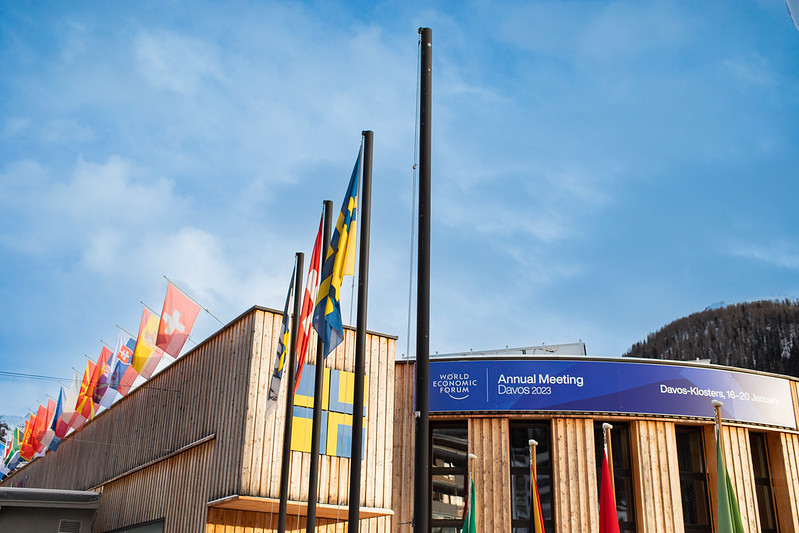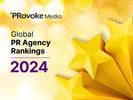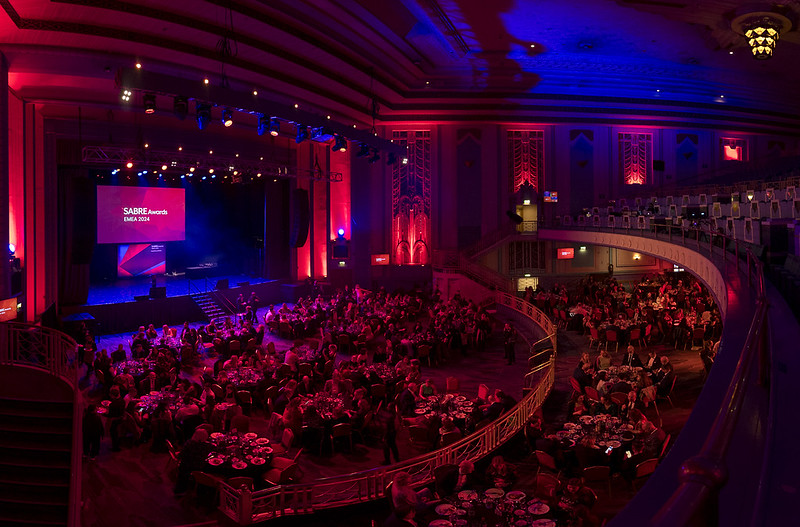Arun Sudhaman 28 Jan 2024 // 1:12PM GMT

We live in increasingly binary times. Thus the temptation, when faced with a move of the magnitude of BCW's merger with Hill & Knowlton, to deliver an instant verdict, one way or the other. Either it's the smartest decision since Shandwick, Weber and BSMG came together, or something more akin to the ill-fated attempt to combine Publicis and Omnicom.
In reality, a more nuanced reading reflects the importance of considering the various perspectives involved in the biggest merger in PR history. From WPP's perspective, the move not only makes financial sense, but almost seems inevitable, given the successive mergers of agencies that have taken place at the world's largest marketing services holding group.
Holding groups are hardly immune to the siren call of operational spreadsheets, and WPP's own performance in recent years has attracted plenty of scrutiny. Combining BCW and H&K will certainly reduce costs and complexity — in line with WPP CEO Mark Read's 'simplification' strategy — and mirroring WPP's various mergers of advertising, media, digital and design agencies under his watch.
It may be harder to discern why a significantly bigger entity will be more successful than the formerly separate agency brands of BCW and H&K, particularly when you consider the performance and innovation of midsize agencies over the past decade. Asking 'why now' is also pertinent, unless — of course — the two brands were not necessarily setting the market alight of their own accord.
WPP's own rationale does not tell us all that much. Read, like Richard Edelman no doubt, contends that being the best is more important than the biggest. But if you are invested in the big agency model, then there are benefits to being the biggest of them all.
There's the advantage of being automatically added to pitch lists across the world, of having more capabilities in more places, and of having the scale to invest in key technology in the AI era. Arguably, you can make the case that the expanded opportunities on offer improve Burson's status as a talent destination — although heightened employee churn may put paid to that notion in the short term at least.
Then there's the branding boost, which should not be underestimated, given how welcome the return of the Burson name is. The loss of the Hill & Knowlton brand, so soon after their rebranding too, will be keenly felt — but no one in the holding group game can credibly cling to the notion that their shingle is uniquely indispensable.
After all, as former H&K exec Josh Reynolds explains so well, holding groups are built for this model. They must optimize profits on a quarterly basis — even if that approach has, largely, seemed at odds with the strategies required to build a successful PR firm in the modern era.
It is a strategy that calls for efficiencies wherever they can be found. It may be telling that WPP's explanation for the deal does not reveal how this combination makes for a deeper, rather than broader offering. Unlike Cohn & Wolfe's takeover of Burson-Marsteller five years ago, BCW and H&K do not seem especially complementary, either from a servicing or geographic perspective.
Industry & competitors
Weighed down by a reputation for cost-cutting, restructuring and consolidation, holding groups have rarely seemed less relevant to growth and innovation across the global PR industry. From an industry perspective, it is tempting to view WPP's blockbuster decision to merge BCW and H&K as one last gasp from an agency model that has often appeared ill-suited to the demands of the 21st century communications business.
In this regard, the analyst response to WPP's blockbuster VML combination is enlightening, even if it focused largely on the benefits of back office consolidation, scale benefits and cost savings — hardly the stuff of which dreams are made.
Bank of America, for example, flagged three concerns with the VML merger, as detailed by Campaign. First, "given its fairly surprising nature, it likely signals ongoing challenging trading"; second that the large scale of internal mergers "can be risky and disruptive on day-to-day operations, particularly in creative"; and third, that it will "entail additional restructuring charges".
"So far, previous [mergers] have not paid dividends as WPP continues to lag industry growth," added BoA, flagging "deteriorating margins" and "higher restructuring charges".
Significantly, BoA also noted "higher staff churn and client loss" along with "managing client conflicts" — all of which are likely to prove challenging for the BCW-H&K combination too.
For bigger PR networks in general, low growth has been a prevailing trend in recent years. The model is less attractive than it was 20 years ago, with technology helping to shrink the world and clients in fast-maturing geographies increasingly opting for specialist players rather than the generalist juggernauts that sometimes appear difficult to distinguish from one another.
Those trends are exacerbated at publicly-held players — where margins are typically managed for the benefit of shareholders rather than clients and talent, and an expansive geographic footprint sometimes seems like more of a burden than a benefit.
As Burson CEO Corey duBrowa told us during his Google tenure, he values agencies for their strategic counsel and creativity. Yet, few major clients have consistently backed up these kinds of statements, creating a market where big firms are saddled with a model that prioritises execution over ideas.
In the AI era, that kind of offering carries considerable risk. Breaking out of that cul de sac requires investment, which is not something that holding groups have typically prioritised ahead of the curve at their PR firms.
That may change now that WPP has one major PR network rather than two, with Ogilvy PR continuing to operate as an integrated practice within Ogilvy. Yet, it remains hard to avoid the conclusion that the BCW/H&K merger was driven more by a quest for operational efficiencies.
The merger also reinforces the notion of a fragmenting market, broadly made up of full-service global players, specialty and midsize boutiques, and regional players. For now, at least, there is plenty of overlap — and rival agencies across the world will no doubt be targeting BCW and H&K's existing clients. But the consolidation suggests that this kind of fragmentation will continue.
Having another giant at the top of the table is no bad thing either, given Edelman's dominance of the airwaves for several years. Weber Shandwick might disagree, but the industry can only benefit from more competition among its biggest players.
How this impacts other holding group agencies will also be keenly observed, with M&A advisors predicting continued integration and divestitures. Omnicom has always remained steadfast in its support of individual brands, but there has been consolidation in specific markets among its individual PR players in recent years, while Porter Novelli's status is often the subject of speculation.
At Interpublic, Weber Shandwick and Golin have typically benefited from the kind of financial returns that have rendered them immune to too much top level tinkering, even as they have integrated various players under their respective banners. In holding group terms, it seems that Publicis may well have been ahead of its time — having already opted for one major network supported by a specialty corporate/financial firm several years ago.
Talent & clients
Surely the talent perspective should have been considered first? After all, even amid the rise of AI, people remain a PR firm's primary — some would say only — asset. Yet, at holding groups, it has been clear for some time that the tension between optimizing profit and managing people has skewed towards the former, hastening the exit of many talented senior executives to the independent world.
For the two firms involved, there will be considerable churn ahead, a potential 'Hunger Games' scenario which ideally results in the best people remaining at Burson. This is something BCWers, at least, will know only too well from the Cohn & Wolfe takeover five years ago. In that case, Cohn & Wolfe's culture effectively led the way; in this one, it will be interesting to see how two relatively strong identities will mesh, and significant change management challenges can be expected.
Even so, it is difficult to frame the merger in especially positive terms when considered from a cultural perspective. There will be many job losses, all of which will remind us that — at publicly-held players at least — investors always come ahead of talent.
That WPP announced this plan to coincide with its Capital Markets day tells us as much. Bereft of detail, there will be substantial uncertainty over the various leadership positions that remain to be filled. H&Kers are likely to feel under particular threat, as Read himself notes, although genuinely focusing on "Harold’s founding principles of honesty, transparency, integrity and excellence" will surely help.
Hill & Knowlton, lest we forget too soon, is the biggest PR firm in EMEA — PRovoke Media's 2020 Agency of the Decade in that region. EMEA aside, the last two decades have been less kind to the 96-year-old firm, but there will be plenty of sadness about the demise of a unique culture and brand.
And culture matters — to the extent that it must pose the biggest risk to the prospects of a successful agency merger. It is no coincidence that the Best Agencies to Work For tend to end up developing the best work and building successful brands. At a time when major networks seem ever more generic, an agency's ethos has become a critical differentiator in the war for talent.
Client conflicts, meanwhile, have always seemed to be the biggest obstacle to a merger on this scale, serving as the strongest argument for, at the very least, a dual agency structure. Burson will still be able to call on the H&K, Axicom and GCI Health brands and, in already merging numerous major agencies, it appears clear that Read does not necessarily view this as the hurdle that others might.
If the client conflicts at H&K and Burson can be successfully managed, in a manner that has yet to be seen within the PR industry, that will surely count as one of the most successful outcomes from this integration.
Leadership & legacy
The creation of Weber Shandwick worked because the leadership team was largely led by BSMG, ensuring unity of purpose, and bringing considerable experience. This merger, meanwhile, represents a major bet on Corey duBrowa, who — like AnnaMaria DeSalva before him — is taking on an agency leadership role without a significant track record in this regard.
So, while few will publicly wager against the widely-respected former Google executive, his senior team will have their work cut out for them. DuBrowa has already installed impressive leaders in key roles; expect the Burson CEO to move similarly quickly as he attempts to build a new agency brand for a fast-changing world.
DeSalva's fate, after proving herself as a relatively effective CEO of H&K over the last four years, will also be the subject of much speculation. It is not surprising that Read has said that this must be a merger rather than a takeover. He is also justified in calling out duBrowa and DeSalva as "two extremely professional leaders" who will be committed to making this work.
Ultimately, Harold Burson was one of the few genuine giants that the PR world has produced, and it befits the industry to have his name atop what is now its biggest PR firm. Yet, it remains open to question whether the legendary industry pioneer would celebrate moves like these. Time will tell if the new Burson can live up to his storied legacy.









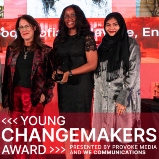












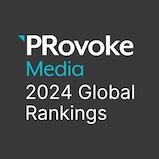












.jpg)












